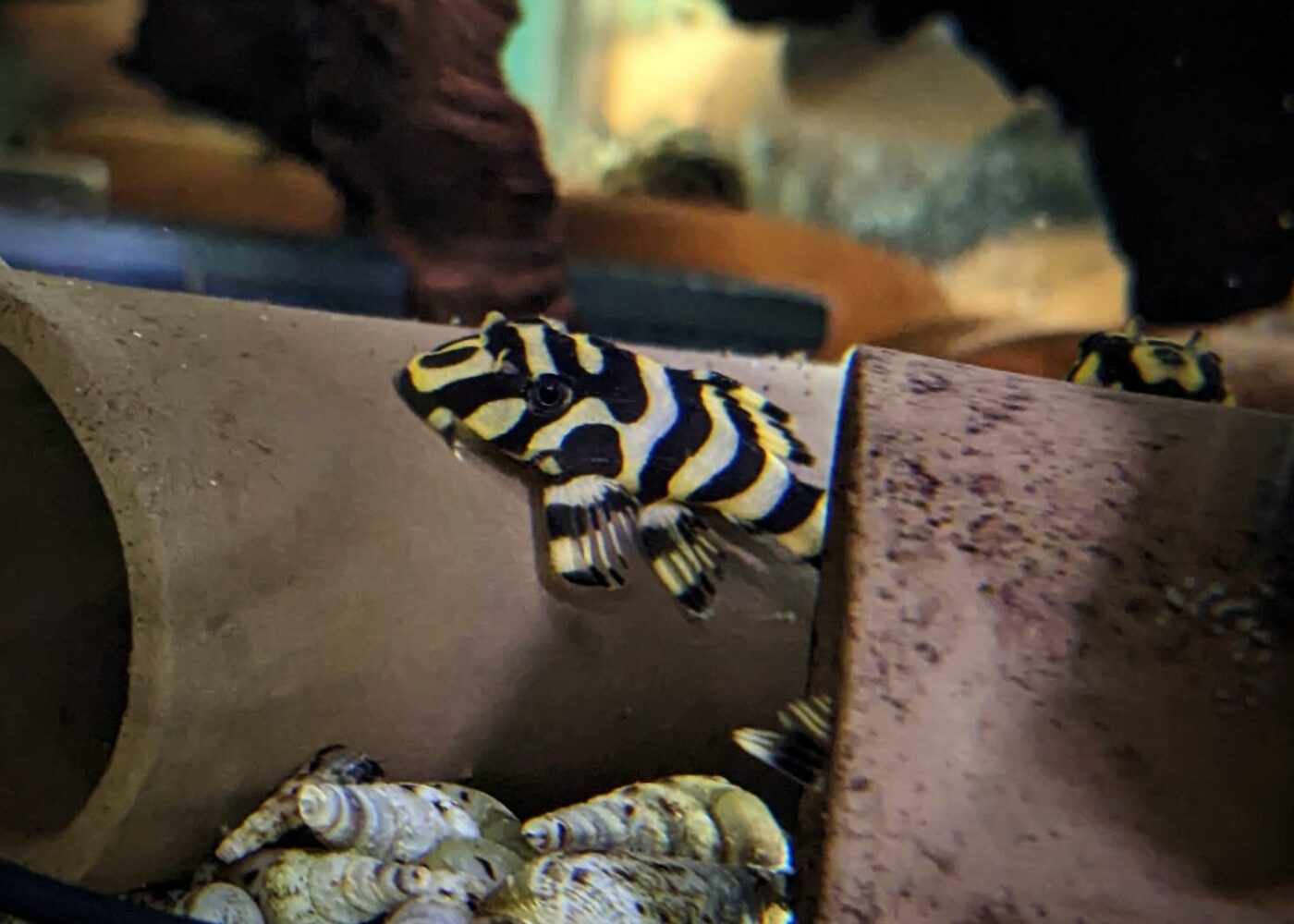Your basket is currently empty!
Breeding the L134 Leopard Frog Pleco—also known as the Peckoltia compta—is a rewarding experience for aquarists. Known for their striking appearance and unique patterns, these plecos are highly sought after in the aquarium community. At Only Fins in Staffordshire, we have extensive experience and passion for helping aquarists succeed in breeding these captivating fish. This guide will walk you through the essential steps and tips for successfully breeding the Leopard Frog Pleco.
Understanding the L134 Leopard Frog Pleco
The Leopard Frog Pleco is renowned for its vibrant yellow and black striped pattern, reminiscent of a leopard frog’s skin. This species typically grows up to 4 inches (10 cm) in length, making it ideal for medium-sized aquariums. A resident of the Tapajós River in Brazil, this pleco thrives in environments with moderate water currents and plenty of hiding spots among driftwood and rocks. Replicating these natural conditions in your aquarium is crucial for their well-being and breeding success.
Setting Up the Ideal Breeding Environment
To ensure success in breeding the Leopard Frog Pleco, it is essential to create a suitable habitat. A tank size of at least 30 gallons is recommended for breeding purposes. Incorporate plenty of caves, driftwood, and rocks to mimic their natural habitat, providing ample hiding spots. A sandy substrate is preferred, as it replicates their natural riverbed environment.
Maintaining proper water parameters is essential for the health of the Peckoltia compta. The water temperature should be between 78-82°F (25-28°C), with a pH of 6.5-7.5. Soft to moderately complex water (4-12 dGH) is ideal. Good water quality is critical, so a high-quality filtration system and adequate aeration to maintain optimal oxygen levels are necessary. These conditions help create an environment conducive to Leopard Frog Pleco breeding.
Breeding Process
The first step in breeding is selecting healthy, mature plecos with vibrant colouration. It’s often best to start with a group of young plecos and allow them to pair naturally. Males can be identified by their broader heads and more pronounced odontodes (brush-like teeth), although sexing them can be challenging.
Simulating the rainy season to trigger spawning, which naturally encourages breeding behaviour in this species, is beneficial. Perform regular water changes with slightly cooler water to mimic rainfall. Additionally, increasing oxygenation and providing a protein-rich diet can stimulate breeding. At Only Fins, we recommend live or frozen foods such as bloodworms, brine shrimp, and high-quality pleco pellets to enhance their diet.
During spawning, males select a cave and attempt to attract females. Once a female enters the cave, spawning occurs, and the male guards the eggs until they hatch. After about a week, the fry emerges, and it is crucial to provide ample hiding places and proper nutrition to ensure their survival.
Raising the Fry
Once the eggs have hatched, the fry will feed on the yolk sacs for the first few days. After this, you can offer them finely crushed fish, infusoria, or specialised fry food. Maintaining excellent water quality is paramount, as fry are sensitive to changes in water conditions. Regular water changes and careful monitoring of parameters are necessary to ensure their health and growth.
Providing hiding spots and gentle water flow will help the fry feel secure as they grow. Gradually, they can be introduced to a more varied diet, similar to the adult Leopard Frog Plecos. Over time, you’ll observe their striking colouration develop, marking the successful rearing of this fascinating species.
Conclusion
Breeding the L134 Leopard Frog Pleco can be a fulfilling and exciting venture for aquarists of all levels. By following the guidelines above and replicating their natural environment, you can achieve success in breeding these beautiful plecos. At Only Fins in Staffordshire, we are dedicated to supporting aquarists in their journey with expert advice and high-quality aquarium products. Whether you are a novice or an experienced aquarist, we invite you to contact us for assistance and to share the joy of breeding these remarkable fish.


Leave a Reply